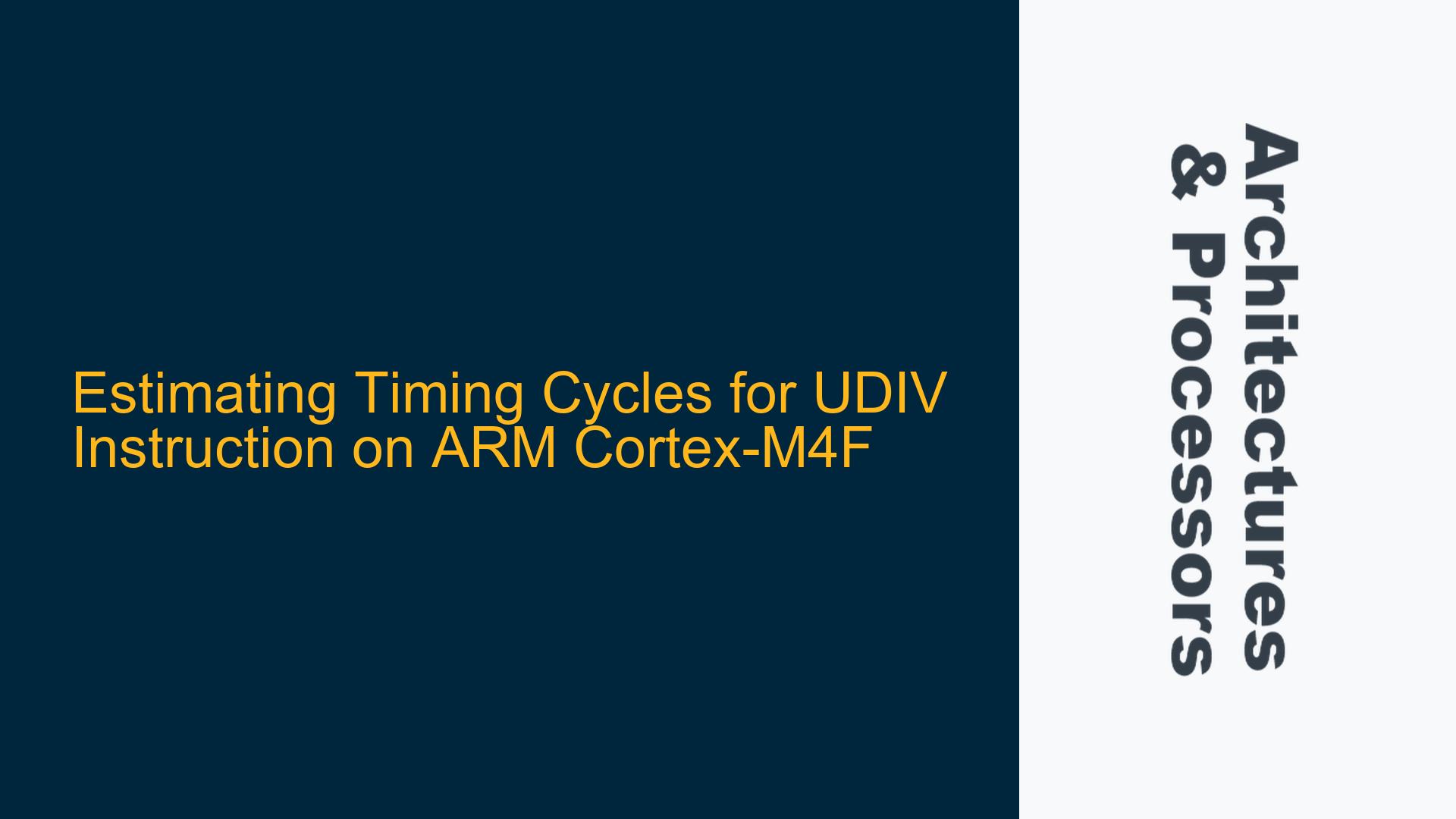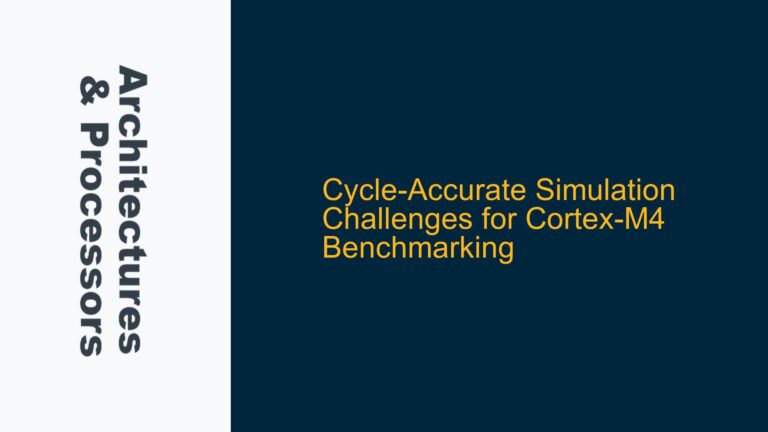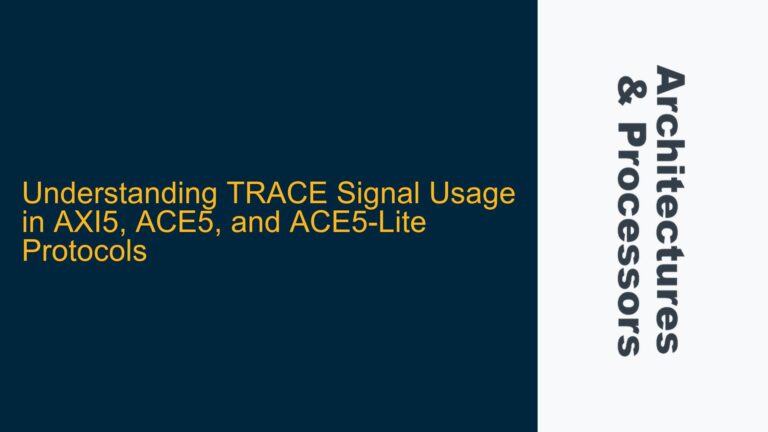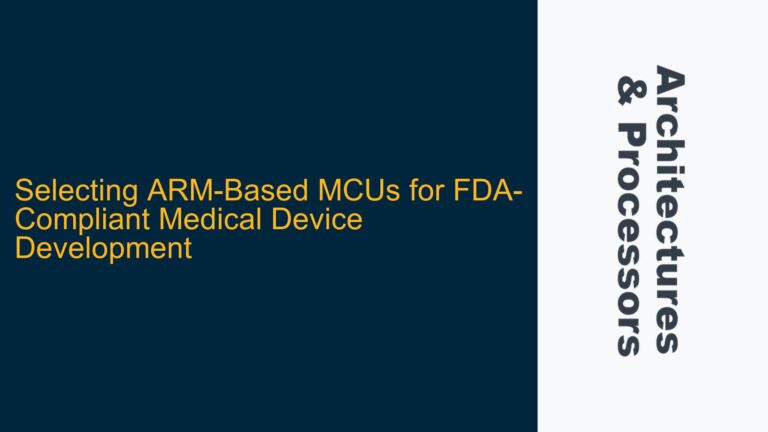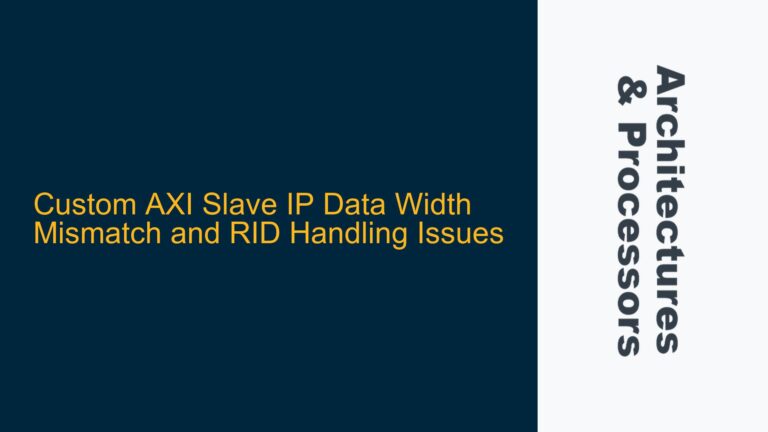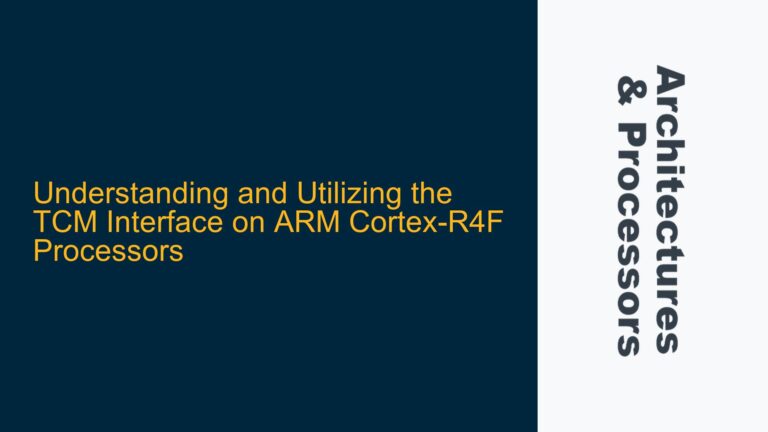ARM Cortex-M4F UDIV Instruction Timing Variability
The ARM Cortex-M4F processor, a member of the Cortex-M series, is widely used in embedded systems due to its balance of performance and power efficiency. One of its key features is the inclusion of a hardware divide unit, which supports the UDIV (unsigned divide) instruction. Understanding the timing characteristics of the UDIV instruction is crucial for developers who need to optimize their firmware for performance-critical applications. The UDIV instruction’s execution time can vary significantly depending on the operands involved, leading to a range of possible cycle counts from a minimum of 2 cycles to a maximum of 12 cycles.
The variability in timing arises from the nature of the division algorithm implemented in the hardware. Division is inherently more complex than other arithmetic operations like addition or multiplication, and the time required to complete a division operation can depend on the magnitude and specific bit patterns of the dividend and divisor. For example, dividing small numbers with simple binary representations (e.g., 9/3) can be completed in fewer cycles compared to dividing large, arbitrary numbers (e.g., 12345678/3952). This variability is explicitly noted in the ARM documentation, which states that the UDIV instruction can take between 2 and 12 cycles, depending on the operands.
The ARM Cortex-M4F’s hardware divide unit is designed to handle a wide range of division operations efficiently, but the exact number of cycles required for a specific division operation cannot be predicted without knowing the operands. This makes it challenging for developers to estimate the exact timing of the UDIV instruction in their code. However, understanding the factors that influence the timing can help developers make informed decisions about when and how to use the UDIV instruction in their applications.
Factors Influencing UDIV Instruction Cycle Count
The cycle count for the UDIV instruction on the ARM Cortex-M4F is influenced by several factors, including the magnitude of the operands, the specific bit patterns of the dividend and divisor, and the implementation details of the hardware divide unit. The ARM documentation provides a range of 2 to 12 cycles for the UDIV instruction, but it does not specify the exact conditions under which the minimum or maximum cycle counts occur. However, based on the nature of division algorithms and the behavior of the Cortex-M4F’s hardware divide unit, we can infer some of the factors that contribute to this variability.
One of the primary factors influencing the cycle count is the number of significant bits in the dividend and divisor. Division algorithms typically involve iterative steps that process one or more bits of the dividend at a time. The more significant bits there are in the dividend, the more iterations are required to complete the division, leading to a higher cycle count. For example, dividing a 32-bit number by another 32-bit number will generally take more cycles than dividing a 16-bit number by an 8-bit number.
Another factor is the specific bit patterns of the dividend and divisor. Some bit patterns can lead to early termination of the division process, reducing the number of cycles required. For instance, if the divisor is a power of two, the division can be completed in fewer cycles because it effectively reduces to a bit shift operation. Similarly, if the dividend is much smaller than the divisor, the division can be completed quickly because the result will be zero with a remainder equal to the dividend.
The implementation details of the hardware divide unit also play a role in determining the cycle count. The Cortex-M4F’s divide unit is designed to handle a wide range of division operations efficiently, but the exact number of cycles required for a specific operation can depend on the internal architecture of the divide unit. For example, some divide units may use a series of subtract-and-shift operations, while others may use more advanced algorithms like non-restoring division or SRT division. The choice of algorithm can affect the number of cycles required for different types of division operations.
Measuring and Optimizing UDIV Instruction Performance
Given the variability in the cycle count for the UDIV instruction, it is important for developers to have tools and techniques for measuring and optimizing the performance of division operations in their applications. The ARM Cortex-M4F provides several features that can be used to measure the execution time of specific instructions, including the UDIV instruction. One of the most useful tools for this purpose is the Data Watchpoint and Trace (DWT) unit, which includes a cycle counter that can be used to measure the number of cycles taken by a specific piece of code.
To measure the cycle count for the UDIV instruction, developers can use the DWT cycle counter to record the number of cycles before and after the execution of the UDIV instruction. The difference between these two values will give the number of cycles taken by the UDIV instruction. This approach can be used to measure the cycle count for specific division operations and to gather data on the range of cycle counts that occur in practice. This data can then be used to inform decisions about when and how to use the UDIV instruction in the application.
In addition to measuring the cycle count, developers can also take steps to optimize the performance of division operations in their applications. One approach is to avoid division operations altogether in performance-critical code paths. For example, if the divisor is a constant, the division operation can often be replaced with a multiplication by the reciprocal of the divisor. This approach can be particularly effective if the reciprocal can be precomputed and stored in a lookup table. Another approach is to use bitwise operations to replace division by powers of two with bit shifts, which are much faster than division operations.
If division operations cannot be avoided, developers can consider using alternative algorithms or data structures that reduce the frequency or complexity of division operations. For example, in some cases, it may be possible to use fixed-point arithmetic instead of floating-point arithmetic, which can reduce the need for division operations. Similarly, in some algorithms, it may be possible to restructure the code to reduce the number of division operations or to simplify the operands involved in the division.
Finally, developers should be aware of the potential impact of division operations on the overall performance of their applications and should profile their code to identify any performance bottlenecks related to division. By understanding the factors that influence the cycle count for the UDIV instruction and by using tools like the DWT cycle counter to measure and optimize the performance of division operations, developers can ensure that their applications run efficiently on the ARM Cortex-M4F processor.
Conclusion
The UDIV instruction on the ARM Cortex-M4F processor is a powerful tool for performing unsigned division operations, but its timing characteristics can vary significantly depending on the operands involved. The cycle count for the UDIV instruction can range from 2 to 12 cycles, with the exact number of cycles depending on factors such as the magnitude and bit patterns of the dividend and divisor, as well as the implementation details of the hardware divide unit. Developers can use tools like the DWT cycle counter to measure the cycle count for specific division operations and can take steps to optimize the performance of division operations in their applications. By understanding the factors that influence the timing of the UDIV instruction and by using appropriate tools and techniques, developers can ensure that their applications run efficiently on the ARM Cortex-M4F processor.
